Clinical Example: Progressive failure of fingertip lengthening with advancement flap and terminal bone graft
| Click on each image for a larger picture |
|
Following fingertip amputation, Hook nail deformity can result from loss of adequate supporting length of distal phalanx.
This reduces the radius of curvature of the nail, and in extreme cases, the nail plate curves tightly over the end of the fingertip.
One type of reconstruction involves lengthening the tip with a bone graft and skin flap, sometimes referred to as the "antenna procedure"
because of the appearance of temporary pins protruding from the fingertip. One problem with this approach is that the distal bone graft
may resorb slowly over the years that follow. The small fingertip has a squared off contour and hook nail deformity following a traumatic amputation. Reconstruction was performed using a volar advancement flap and bone graft: |
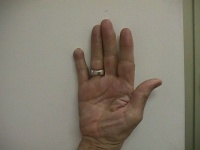
|
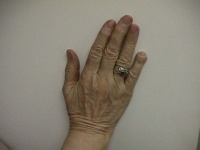
|
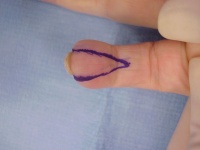
|
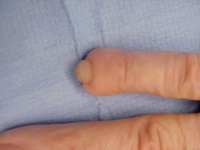
|
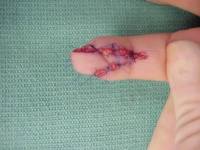
|
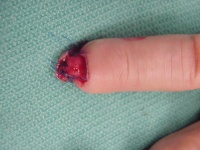
|
| The resulting contour had notches at the distal borders of the flap, which was treated with small Z-plasties: |
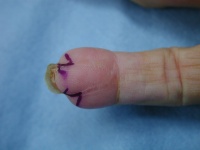
|
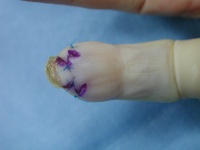
|
| As the bone graft resorbed, the contour became more bulbous, and several years later was revised with excisional W-plasties. |
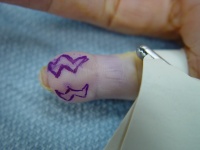
|
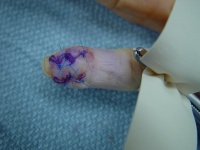
|
| The tip graft progressively resorbed, and by six years after reconstruction, the hook nail deformity has recurred completely. |
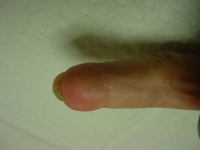
|
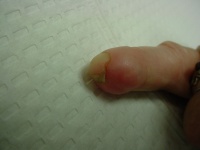
|
| Xrays over this period: initial deformity, bone graft, and progressive bone graft loss over the course of years: |

|
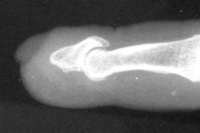
|
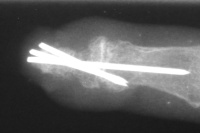
|

|
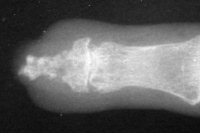
|
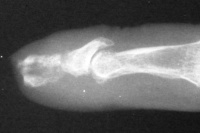
|
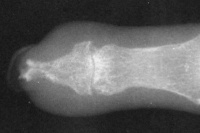
|
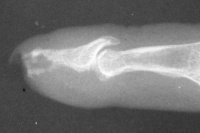
|
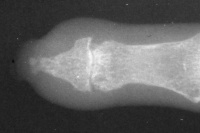
|
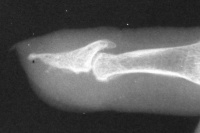
|
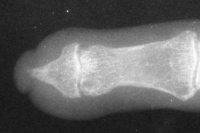
|
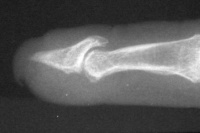
|
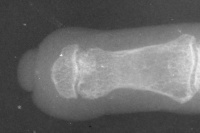
|
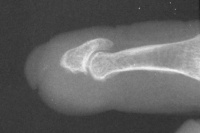
|
|
Search for... Antenna Procedure Hook nail deformity
|
Case Examples Index Page | e-Hand home |